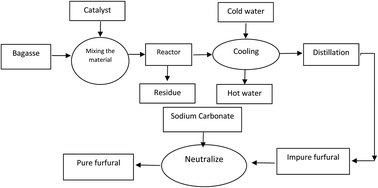A new catalyst for the production of furfural from bagasse
Abstract
Furfural is a poisonous, flammable compound that is widely used in the chemical industry. The main raw materials for producing furfural are “pentosan-rich plant” components such as bagasse. In this study, furfural was produced in a pilot plant using sulfuric acid as a catalyst and an inorganic salt (NaHSO4) as a promoter. The resulting furfural product was experimentally measured and reported in the presence of NaCl + H2SO4 or H2SO4, which were used as reaction catalysts. The obtained results show that H2SO4 plus NaHSO4 is more effective for producing furfural than the other catalysts investigated. Furthermore, a three-layer feed-forward neural network analysis was applied to predict furfural production from the reactor. It was observed that the neural network systems could effectively predict the experimental results. The model for 385 experimental data under various conditions resulted in a squared correlation coefficient of 0.959 and a mean square error of approximately 10% for this analysis.


 Please wait while we load your content...
Please wait while we load your content...